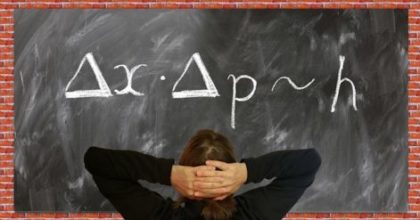
The people have spoken and our next blog book club title will be Quantum Physics and Theology by John Polkinghorne. In it, Polkinghorne explores how the process of science has similarities to the process of theology and the ways that studying science can benefit theological inquiry. It is not a book about whether science proves God, but rather about how we learn about the physical world through science can inform how we learn about God through theology. As such, I believe it will be accessible even if you aren’t familiar with quantum physics, as it does not delve too deeply into the technical details.
It’s a short book of only 5 chapters, so we’ll take one chapter per week starting on September 20th. I propose we try to have two video chat sessions during those 5 weeks, unless there is a high demand for weekly video chats as well. I’ll give you guys a week off from voting; next week I’ll solicit some input on timing and frequency of the video chats. In the meantime, feel free to sound off in the comments if you have thoughts/preferences/opinions/objections about any of these details.
Although only tangentially connected, some of you may enjoy this article on the foundations of quantum physics as a warm-up for our book chats. Quantum theory enjoys an interesting place in the physics canon. Its strongest virtue is the robustness of its empirical confirmation; the mathematics of quantum physics make predictions that have been confirmed with considerable precision across numerous experiments. And yet those predictions seem downright bizarre at times when compared to the behavior of rigid macroscopic bodies like proverbial billiard balls (although many of the counterintuitive behaviors can be reproduced on a macroscopic scale with waves in fluids). While the math is elegant, no one would come up with quantum physics on their own unless they were obligated to by observations.
This is the point of quantum reconstruction, as discussed in the first linked article. In its original formulation, quantum physics lacked a theoretical foundation. The math wasn’t derived from obvious first principles, it was selected because it matched experimental results. So now there is some curiosity about whether a suitable foundation can be identified, and if it will tell us something more fundamental about the theory or even the nature of reality, at least at the smallest scales. Thus far, there appear to be as many ways to formulate quantum physics as there are ways to interpret its results. So that’s fun.
I suspect there’s a case to be made that Christianity has a similar property, in the sense that it’s not something you would make up if you weren’t compelled by observations, such as the observations of a resurrected Jesus by his various followers. Polkinghorne may touch on this; it’s been a little while since I’ve read the book. Something we can look forward to finding out together.
Andy has worn many hats in his life. He knows this is a dreadfully clichéd notion, but since it is also literally true he uses it anyway. Among his current metaphorical hats: husband of one wife, father of two teenagers, reader of science fiction and science fact, enthusiast of contemporary symphonic music, and chief science officer. Previous metaphorical hats include: comp bio postdoc, molecular biology grad student, InterVarsity chapter president (that one came with a literal hat), music store clerk, house painter, and mosquito trapper. Among his more unique literal hats: British bobby, captain’s hats (of varying levels of authenticity) of several specific vessels, a deerstalker from 221B Baker St, and a railroad engineer’s cap. His monthly Science in Review is drawn from his weekly Science Corner posts — Wednesdays, 8am (Eastern) on the Emerging Scholars Network Blog. His book Faith across the Multiverse is available from Hendrickson.

Leave a Reply